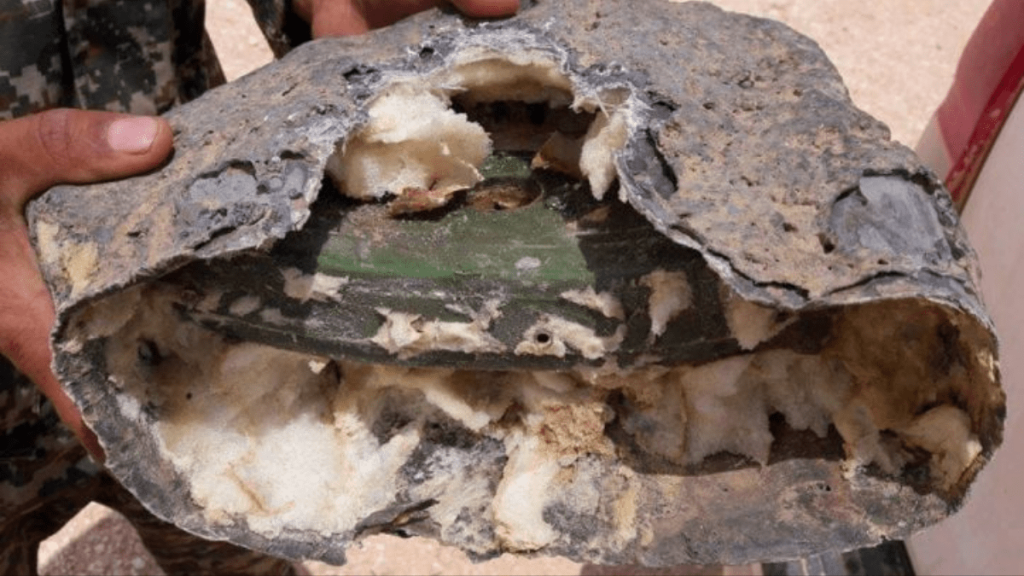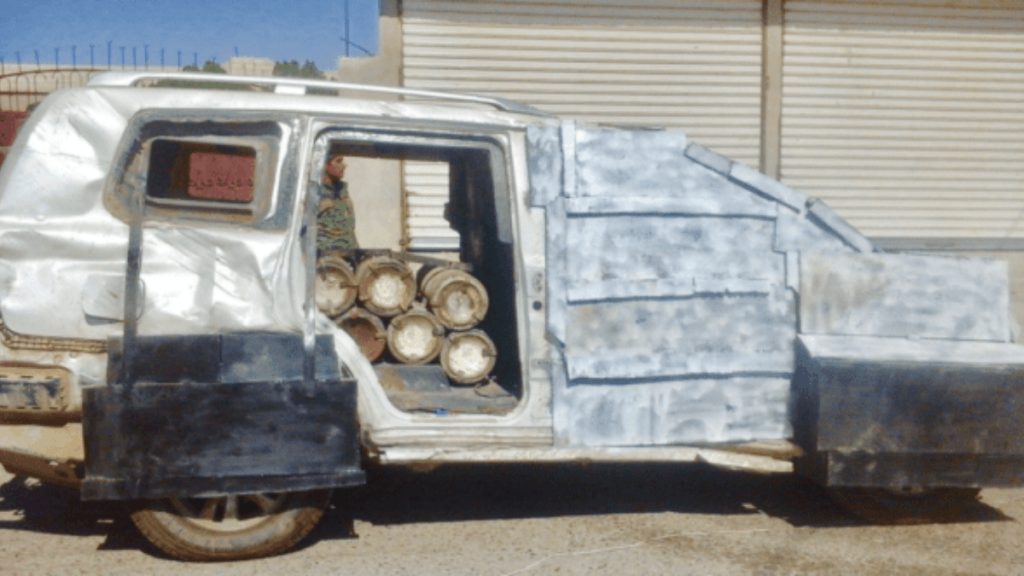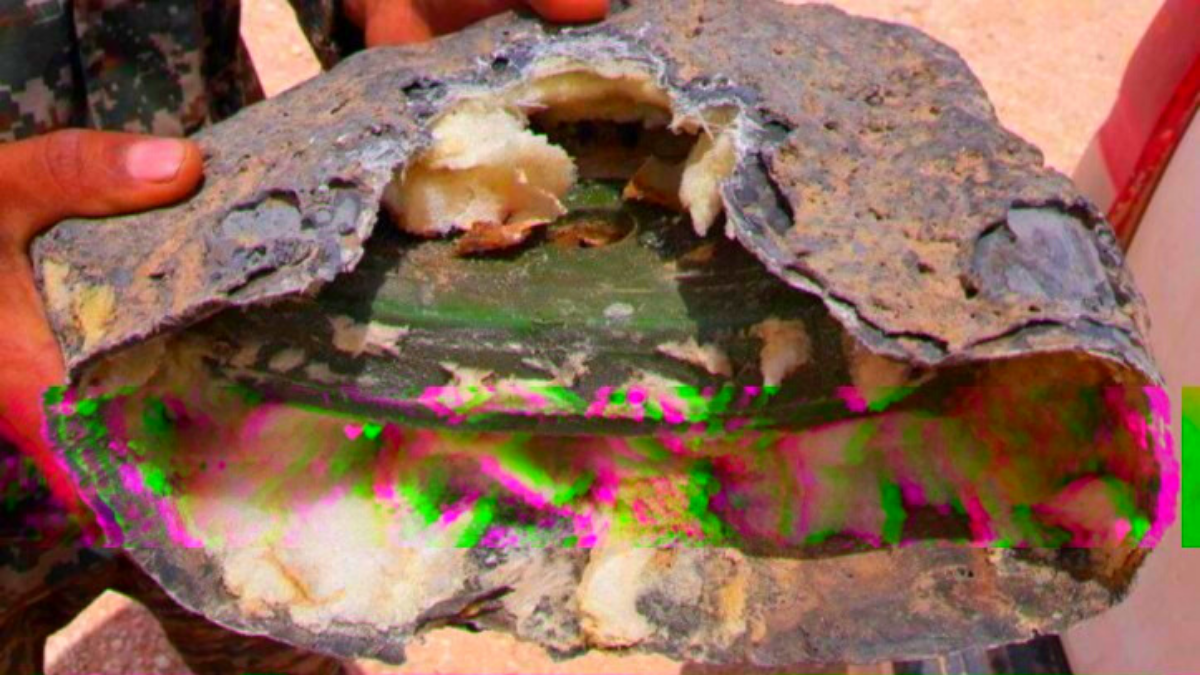Whilst documenting a battle site around the Idlib region of Syria, the cameraman in this video records himself stepping on what is either an IED or a piece of unexploded ordnance (UXO) left behind. The carnage he captured on film is a stark reminder of what the War in Syria has caused. The pool with a slide looks like it could be any back yard in America or Europe, yet it is surrounded by sheer destruction with deadly things lying in wait under the rubble.
The victim of the blast can be heard screaming in Arabic “this is bad” before calling for somebody named Abu Zuhair and yelling ”my leg is gone! Help!”. It’s unclear who the man was or if he survived the blast.
The IED Threat in Syria and Beyond
IED stands for an improvised explosive device. It’s a bomb that’s largely constructed and deployed in non-conventional methods in various theatres of conflict around the world. IEDs are commonly made from conventional military explosives, such as an artillery shell, attached to a detonating mechanism. They are often deployed as roadside bombs.
The IED is a popular weapon amongst various terrorist and insurgent forces. Although they’ve been heavily used in global conflicts from The Troubles in Northern Ireland to the War in Ukraine, they’ve become particularly characteristic of the various conflicts that have plagued the Middle East post-9/11.

During the 2003 War in Iraq, improvised explosive devices were heavily used against the forces of the U.S.-led coalition. By early 2008, IEDs were responsible for over 63% of coalition soldiers killed in Iraq. Outside of the Middle East, in the concurrent War in Afghanistan, IEDs deployed by the Taliban have been responsible for 66% of coalition forces killed between the beginning of the conflict in 2001 and now.
The conflict in Syria that erupted as a result of the Arab Spring in 2011 and the subsequent spread of ISIS through the country as well as in neighboring Iraq, saw revolutionary developments of the IED in combat across Syria. Since 2011, Syria has consistently been one of the countries that have seen the worst impact of violence conducted using explosives.
“The simple and terrifying reality, forbidden from discussion in America, was that despite spending $600 billion a year on the military, despite having the best fighting force the world had ever known, they were getting their asses kicked by illiterate peasants who made bombs out of manure and wood.”
― Michael Hastings, The Operators: The Wild and Terrifying Inside Story of America’s War in Afghanistan
The organization Action on Armed Violence (AOAV) provided shocking statistics regarding the devastation caused by explosive violence in Syria. Between 2011-2018 for example, Syria suffered 79,206 deaths and injuries from explosive attacks. Of these, 85% (67,263) were civilians and 90% occurred in populated areas.
Initially, insurgents of the Free Syrian Army (FSA) utilized multiple forms of IEDs to launch grueling attacks on various vehicles ranging from buses and trucks to tanks and military convoys of the Syrian Arab Army and other pro-Assad fighting forces such as Hezbollah. The introduction of ISIL into the region saw the regular deployment of SVBIEDs which stands for Suicide Vehicle Borne Improvised Explosive Devices.

The most devastating example of an SVBIED in action was the Aleppo suicide car bombing that took place on the 15th of April, 2017. Under an internationally agreed deal, besieged Shia civilians in the city of Aleppo would be safely evacuated. As an enormous convoy of buses began transporting hundreds of civilian evacuees from the city, an SVBIED detonated and killed at least 126 people including at least 80 children. It is still unclear who was responsible for the attack.
Last month, an IED was responsible for the death of Russian Major General Vyacheslav Gladich who was killed in Deir Ez-Zor Governorate. According to Overt Defence, General Vyacheslav Gladich was embedded with the local National Defense Forces when he was killed. Five other NDF members were killed in the blast as well, with several others injured.
In response to the IED threat in Syria, various countermeasures have been developed. For example, we recently covered the Scarab anti-IED, unmanned ground vehicle developed by Russian forces in Syria. Such vehicles played a vital role in removing booby traps and unexploded ordnance from the infrastructure and ancient monuments in the Syrian city of Palmyra.













